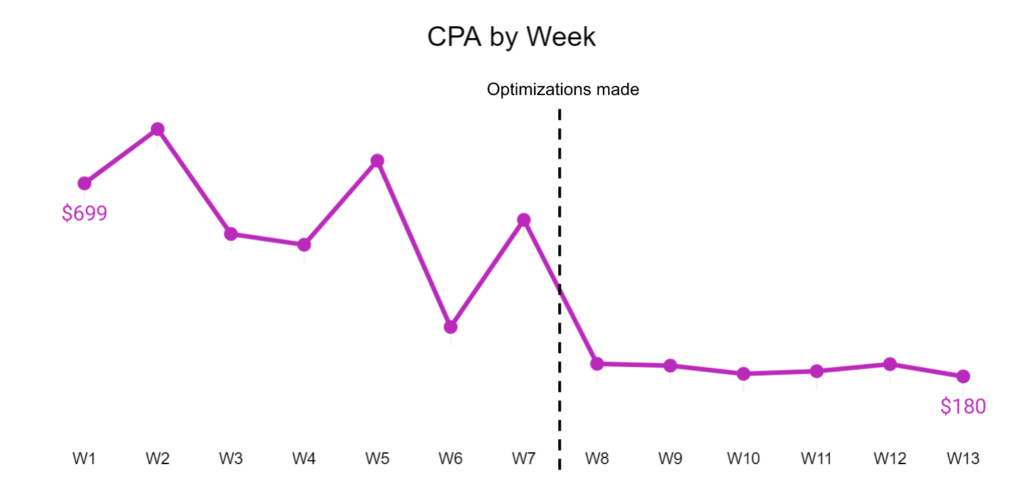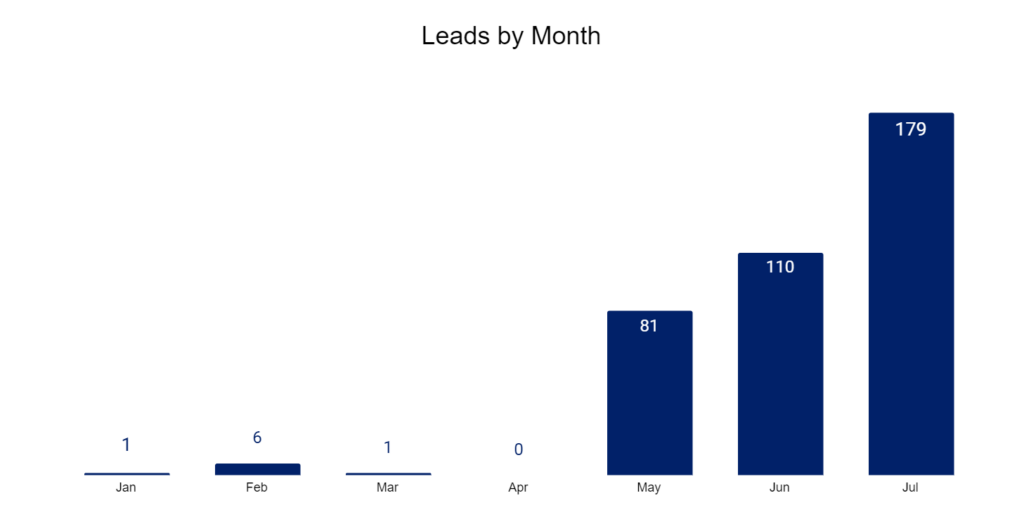

Success Story: Long Term Care Insurance
Achieving Lead Volume Goals Through Paid Media
Client Overview
Our client is a Fortune 500 financial services organization that frequently parters with insurance companies to sell their products, such as long term care insurance policies. The content of this case study refers to a long term care insurance company that partnered with our client to run a paid media pilot over three months.
The Minnesota-based insurance company has helped over 50,000 families plan for the consequences of an extended care event. Since 1990, the business has worked with individuals, businesses and associations to create the best long term care solutions.
Services:
- Paid Media
Client Segments:
- Insurance
Project Goal
Implement paid media solutions that increase lead volume of new long term care insurance customers while capturing an efficient cost per lead.
The Challenge
- Specialized product: The client is in a very niche market. The business solely specializes in long term care insurance. It does not sell any other insurance product.
- Small target market: Many people do not consider long term care insurance a necessity until they reach an older age. The leads that were coming through paid media needed to be from users that were young enough to qualify for the product.
- Limited budget: As a result of the older target market, the audiences that were being targeted needed to extremely refined in order to achieve an efficient cost per lead.
Our Approach
- Track Everything: The company had never experienced a strategic digital marketing campaign before, so we implemented proper tracking around every important aspect of the campaign for the purpose of future analysis and success.
- Observe Everything: From the launch of the campaign, we ensured we were observing all ages, genders, and household income levels to help the client understand their audience through data and effectively target users.
- Refining Location Targeting: Our campaigns launched in markets that the client identified as high opportunity areas. Through data-driven analysis, we were able to pinpoint which locations were seeing the greatest benefits from our campaign, and therefore push more budget towards those efficient locations for the remainder of the campaign.
- Regular Optimization: Throughout the course of the campaign, several regular optimizations were made, including:
- Adding positive bid adjustments to efficient age groups, and excluding inefficient age groups
- Testing new location targets that showed opportunity, and removing location targets that were driving minimal leads
- Simplifying the campaign structure to allow machine learning to spend the budget in the most effective ways
- Shifting budget towards the most efficient campaign types
- Bid Strategy Testing: In order to achieve an efficient cost per lead, we switched our bid strategy from maximize conversions to Target CPA. Testing this new bid strategy drastically improved the cost per lead without affecting lead volume.
Results & Insights
Cost per lead improved 74% and lead volume increased by 58x over the duration of the 3-month pilot.

We are able to achieve efficiency quickly due to high number of optimizations throughout this short pilot.

Optimizations:
- The cost per lead decreased over 56% following the switch to a Target CPA bid strategy, with consistent lead volume through the remainder of the pilot.
- We narrowed in on the 55-64 age group due to the high lead volume and efficient CPA.
- We maximized our budgets by segmenting our campaigns into priority markets.
What did we learn?
Regularly setting performance goals and repeated regular optimizations are essential to driving momentum, gaining valuable insights & learnings through data, and achieving significant milestones.
Tell us about your next project
Whether you have questions about how we can help your business or want to explore the possibility of working together, please contact us.
